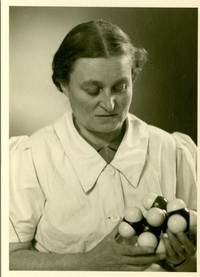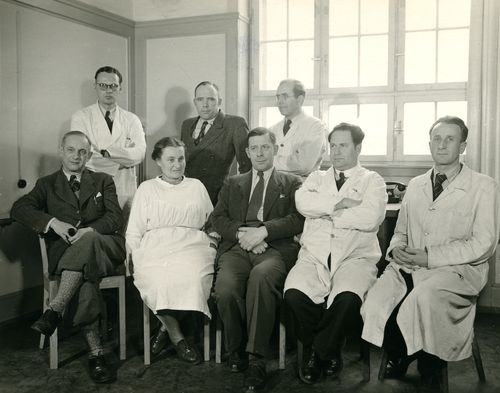


Emma Maria Wolffhardt was the first woman to head her own research area at BASF. From 1925 to 1960 she worked for the company and developed, among other things, an anti-knock aircraft fuel in the ammonia laboratory there.
Emma Maria Wolffhardt, born on July 27, 1899, studied chemistry at the University of Würzburg and then worked as an assistant at the Technical University of Karlsruhe. She completed her doctoral thesis under Stefan Goldschmidt (1899-1971), a student of the well-known chemist and Nobel Prize winner Adolph von Baeyer (1835-1917). Goldschmidt, who researched the chemistry of radicals, had received an adjunct professorship in Würzburg in 1923, but shortly thereafter accepted a call to Karlsruhe as Head of organic chemistry.
Wolffhardt joined the chemical company BASF in Ludwigshafen in July 1925. Her first job was in the literature office of the main laboratory. She soon applied successfully for a position as an assistant to Alwin Mittasch (1869-1953), who was then Head of the ammonia laboratory. Mittasch was known for his work on catalysts for ammonia synthesis.
From 1940, Wolffhardt was the first woman to head her own research area at BASF. She was the first researcher to recognize the value of the spherical cap model for the development of catalysts. The spherical cap model, designed a few years earlier by the physicist Herbert A. Stuart (1899-1974), illustrates the three-dimensional shape of molecules. It represents the atoms of a molecule using spherical sections (calottes), with the various chemical elements appearing in different colors and the atomic sizes, bond angles and bond lengths correspond to the actual relationships. Wolffhardt used the space-filling model primarily to understand and improve organic synthesis. In this way, she succeeded for the first time in producing significant quantities of 2,2,3-trimethylbutane (triptane), a high-quality, anti-knock aircraft fuel with an octane number of 112.
In the history of BASF, Wolffhardt was not only the first academic with her own research area, but also the first woman to celebrate 25 years of service there. After this service anniversary in 1950, she continued to research for another ten years ? until her retirement in 1960 ? in the ammonia laboratory at BASF.
Emma Maria Wolffhardt died on November 12, 1997 at the age of 98 in Heidelberg.

a notice
The texts published in this series do not claim to be scientific publications. Authors and other people involved are not experts in the history of science. The purpose of the series is to introduce the mostly unknown women chemists and to remind you of the well-known women chemists. We encourage readers who want to know more to study academic Literature on the women featured. In some cases there are detailed chemical-historical works.
authors
Prof. Dr. Eberhard Ehlers
Prof. Dr. Heribert Offermanns
Editorial processing
Dr Uta Neubauer
project management
Dr Karin J. Schmitz (GDCh public relations)
The authors are responsible for the content of the biographies.
The content presented on these pages has been carefully compiled. However, the authors, Editorial staff and publishers assume no responsibility or liability for the completeness and correctness of the content or for typographical errors.
Photos: BASF Corporate History, Ludwigshafen a.Rh (download not permitted)
back to overview biographies of female chemists
back to publications
This page has been machine translated. If you have any feedback or comments please feel free to contact us. 
last modified: 01.02.2022 10:59 H from K.J.Schmitz